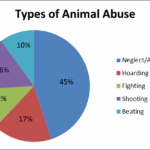The enforcement of animal cruelty laws has long been a subject of inquiry and concern among animal advocates and concerned citizens alike. Often, when we think about animal welfare and the protection of our vulnerable companions, questions arise regarding the various authorities responsible for enforcing these vital laws. In the United States, three primary entities—local police, the Society for the Prevention of Cruelty to Animals (SPCA), and the United States Department of Agriculture (USDA)—hold varying degrees of responsibility over the enforcement of animal welfare regulations. Understanding the nuanced roles of these organizations unveils the complexities of animal law enforcement.
To begin, it is pivotal to recognize that animal cruelty laws differ vastly from state to state. These laws, while grounded in a common ethos of protecting animal welfare, often reflect unique regional sensibilities towards animals. Local law enforcement agencies, such as the police, are typically the first line of inquiry when confronted with instances of animal cruelty. Police officers are trained to handle a plethora of law enforcement duties, and in many jurisdictions, they are charged with investigating animal abuse cases. They possess the authority to direct investigations, gather evidence, and arrest individuals suspected of cruelty. However, their capacity to respond effectively is inherently affected by the resources available to them and the level of training they undergo in animal welfare issues.
Nevertheless, the local police’s involvement might not encompass all aspects of animal welfare enforcement. It is here that the SPCA emerges as a critical player. Founded on the principle of preventing cruelty to animals, the SPCA operates in various capacities across the nation, often in tandem with local law enforcement agencies. Many SPCAs possess the authority to investigate cases of animal abuse and neglect, and they often employ humane investigators specifically tasked with these responsibilities.
The role of the SPCA extends beyond mere enforcement; it encapsulates advocacy, education, and rehabilitation. SPCAs conduct outreach programs that inform the public about responsible pet ownership, thereby mitigating the occurrence of cruelty at its root. This preventative approach stands in stark contrast to the reactive nature of law enforcement, which is often called after abuse has already occurred. The SPCA’s engagement in community education and resources for animal care creates a holistic framework aimed at protecting the well-being of animals.
However, it is essential to delineate the limitations that the SPCA faces in its enforcement capabilities. While they often work closely with police, the SPCA is not a law enforcement agency per se; rather, they serve as a complement to local police. Their resources can vary widely, influenced by funding, community support, and operating capacity. This variability often results in inequities in enforcement across different locales, whereby some communities may have robust SPCA presence and others may lack adequate coverage.
The USDA, meanwhile, plays a distinctly different, albeit significant, role in the enforcement of animal welfare laws. The agency’s jurisdiction primarily encompasses the oversight of agricultural animals and commercial breeding operations. The USDA enforces the Animal Welfare Act (AWA), which establishes minimum care standards for animals raised for research, exhibition, or companionship. Unlike local police and SPCAs, the USDA is equipped with inspectors who conduct routine assessments of facilities like puppy mills and laboratories, ensuring compliance with federal standards.
Nonetheless, the USDA’s emphasis tends to skew towards commercial enterprises rather than individual cases of cruelty. This distinction raises essential questions about the overarching efficacy of animal welfare laws when the primary enforcement agency may favor industry standards over individual animal rights. Critics of this approach often point to insufficient enforcement of existing regulations, leading to systemic problems, including neglect in facilities designed for breeding or research. Moreover, the bureaucratic nature of federal enforcement can result in delayed responses to pressing cases of animal cruelty.
This triad of enforcement—police, SPCA, and USDA—reveals a fragmented approach that leads to variances in animal protection efficacy. In a world where compassion for animals grows increasingly prominent, it is pertinent to critically assess not only who enforces these laws but how effectively they serve their intended purpose. The juxtaposition of local law enforcement’s immediate response capabilities, the SPCA’s educational ethos, and the USDA’s regulatory framework builds a complex landscape of animal welfare legislation.
Furthermore, the engagement of non-profit organizations and grassroots activists often supplements the existing frameworks of compliance and enforcement in areas where significant gaps are identified. Advocates fighting against animal cruelty work tirelessly to draw attention to systemic inadequacies and propose reforms that could streamline the enforcement processes. The public discourse around animal welfare continues to evolve, and community involvement increasingly shapes the legal landscape surrounding animal cruelty.
As animal advocates raise consciousness around these issues, an urgent need emerges for unified efforts to harmonize the disparate forces engaged in animal welfare enforcement. Greater collaboration, shared resources, and comprehensive training for law enforcement can lead to more effective enforcement of animal cruelty laws. The journey towards achieving meaningful change in the enforcement of animal welfare is multifaceted and requires concerted efforts from all stakeholders involved in the protection of our animal companions. Ultimately, our collective responsibility to safeguard those who cannot voice their suffering remains paramount in our ethical deliberations.



